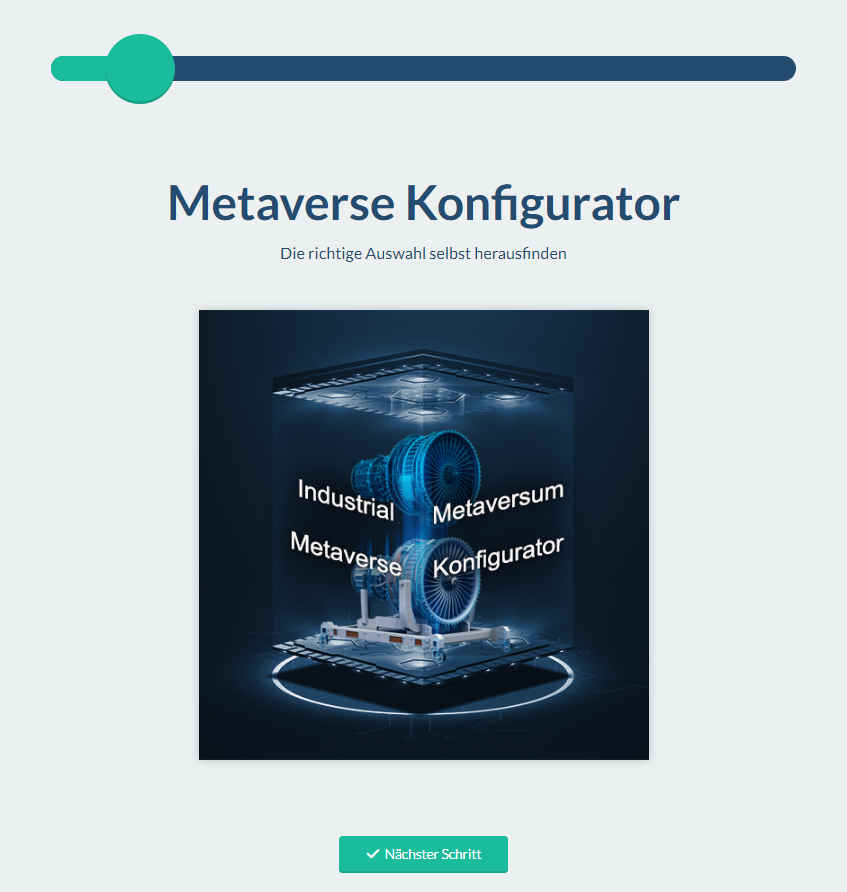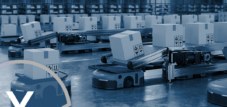Automatic identification and data capture (AIDC) sensor technology from manufacturers and providers with the 2D matrix code
Language selection 📢
Published on: June 21, 2023 / update from: June 21, 2023 - Author: Konrad Wolfenstein
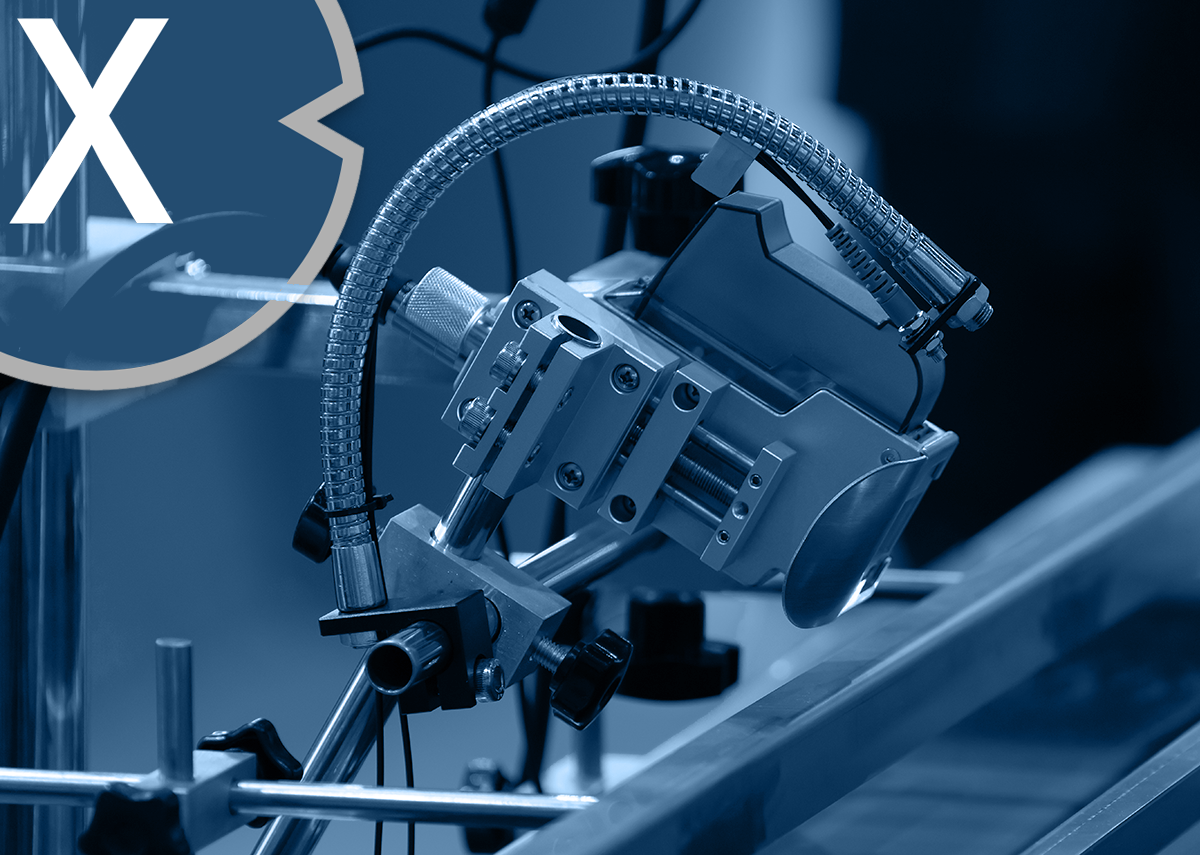
Sensor technology: Optical color mark sensor on an industrial beverage machine – Image: Xpert.Digital /MOLPIX|Shutterstock.com
Automatic identification and data capture (AIDC) sensor technology from manufacturers and providers with the 2D matrix code
The automatic identification and data capture (AIDC) sensor technology from manufacturers and providers with 2D matrix codes offers an effective solution for identification and data capture in logistics and intralogistics. 2D matrix codes are special codes that can store a large amount of information in a small space. Compared to traditional barcodes, 2D matrix codes enable higher data density and provide expanded capabilities for product capture and tracking.
The manufacturers and suppliers of AIDC sensor technology with 2D matrix codes offer a wide range of solutions, including:
2D matrix code scanner
These scanners can capture 2D matrix codes quickly and accurately. They offer a high reading rate and enable quick and reliable identification of products, containers or pallets.
Mobile data collection devices
These portable devices, such as handheld scanners or mobile computers, enable the capture of 2D matrix codes in various environments. They are ideal for use in warehouses, production facilities or in the field.
Stationary scanners
These fixed scanners are used in production lines, warehouses or at shipping/receiving stations to ensure the smooth flow of products and goods. You can automatically read 2D matrix codes and capture data in real time.
Software solutions
The manufacturers and suppliers of AIDC sensor technology also offer software solutions for processing and interpreting the collected data. These solutions enable seamless integration with existing systems such as warehouse management systems or ERP systems.
The use of AIDC industrial sensors with 2D matrix codes offers a variety of advantages for logistics and intralogistics, including:
- Fast and precise recording of products and goods
- Improved transparency and traceability along the supply chain
- Efficient inventory management and control
- Reduction of errors and manual interventions
- Optimization of logistics processes and cost savings
Manufacturers and suppliers of AIDC sensor technology with 2D matrix codes help improve the efficiency and accuracy of logistical operations and help companies remain competitive and meet the demands of a demanding logistics landscape.
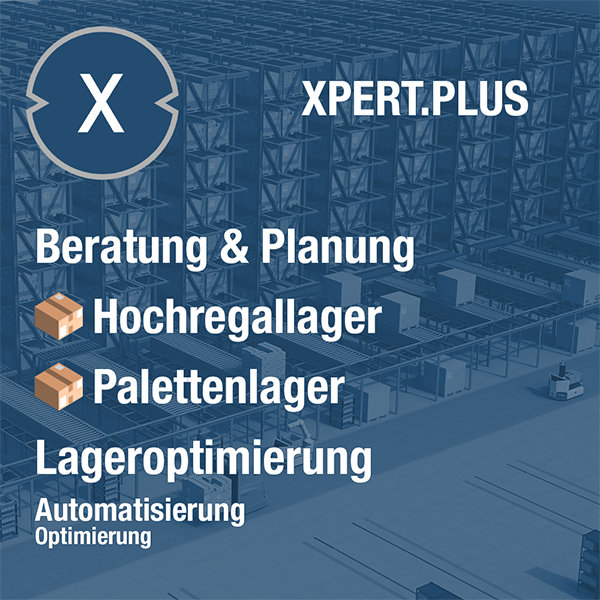
Xpert.Plus warehouse optimization - high-bay warehouses such as pallet warehouses consulting and planning
Prospects and future development of AIDC sensor technology and industrial sensors
The future prospects of “automatic identification and data acquisition” (AIDC) sensor technology are extremely promising. With increasing digitization and automation in logistics and intralogistics, AIDC technology is becoming increasingly important.
Further development of RFID technology
RFID tags and readers are becoming increasingly more powerful, more cost-effective and more versatile. Future innovations could include smaller, more energy efficient tags, longer range, and improved readers with higher accuracy. This enables broader application in various logistical areas.
Use of IoT and cloud technologies
The integration of AIDC sensors with the Internet of Things (IoT) and cloud technologies enables seamless, real-time data communication and analysis. This offers better transparency, enables informed decisions and supports the optimization of logistics processes.
Integration of AIDC into autonomous systems
AIDC sensors can be used in autonomous systems such as automated guided vehicles (AGVs) and robots to enable precise identification and tracking of goods. This supports automation and increased efficiency in intralogistics.
More efficient data collection
The use of 2D matrix codes enables faster and more accurate data collection. Sensors can read the codes faster and from different angles, resulting in accelerated processing of information.
Improved traceability
2D matrix codes can be used to encode detailed information about a product or shipment, including batch numbers, serial numbers, origin, destination and much more. This enables more precise traceability throughout the supply chain, which is beneficial for quality assurance, inventory management and recalls.
Increasing data security
By using 2D matrix codes, security-relevant information such as authentication features, production data and access rights can be encrypted and protected. This helps improve data security and minimizes the risk of forgery or unauthorized access.
Augmented Reality (AR) and Virtual Reality (VR)
The combination of AIDC sensors with AR and VR technologies opens up new possibilities for visualizing and interacting with logistical data. For example, AR glasses can be used to support order picking processes by giving employees precise instructions and guiding them to the right products.
Interactive user experience
2D matrix codes can also be used to create interactive user experiences. By scanning the code, users can access additional information, videos, product reviews or even virtual presentations, increasing customer engagement.
Integration with other technologies
The AIDC sensor technology in conjunction with 2D matrix codes can be seamlessly combined with other technologies such as Internet of Things (IoT), artificial intelligence (AI) and augmented reality (AR). This enables innovative applications such as automated inventory, real-time supply chain monitoring or the creation of digital twins of products and assets.
Advanced data analysis and artificial intelligence (AI)
By using AIDC sensors, large amounts of logistics data can be collected. In the future, advanced data analysis and AI algorithms will enable even deeper and more precise analysis. This allows companies to gain insights, identify bottlenecks, perform predictive maintenance and further optimize their logistics processes.
➡️ The future prospects of AIDC sensor technology are driven by increasing demand for efficiency, transparency and precision in logistics and intralogistics. Continuous development of technologies, integration with other digital solutions and improving data analysis capabilities will lead to increasing adoption and application of AIDC technology. Companies using this technology will be able to optimize their logistical processes, reduce costs and strengthen their competitiveness.
➡️ The global use of 2D matrixcodes will be implemented with the global initiative “Sunrise 2027” in the next few years because they can be used inexpensively, easily accessible and universally applicable. In combination with AIDC sensor technology, you open a wide range of options for optimizing logistics processes, improvement in data security and creating interactive user experiences. Companies that use these technologies can benefit from more efficient operating processes, higher customer satisfaction and competitive advantages.
Our Industrial Metaverse configurator
Just try out our universally applicable (B2B/Business/Industrial) Metaverse configurator for all CAD / 3D demo options:
Xpert (B2B/Business/Industrial) Metaverse configurator for all CAD / 3D data can be used on all devices, one platform!
Suitable for:
One of the Top Ten: The 10+2 best-known manufacturers and suppliers of automatic identification and data capture (AIDC) sensor technology and industrial sensors
The industry landscape is constantly evolving and new companies are entering the market. However, the following companies have established themselves as leading providers of AIDC technologies and are known for their innovative solutions and high quality products.
Honeywell
Honeywell offers a wide range of AIDC solutions including barcode scanners, RFID systems, mobile data capture devices and more. They have a strong presence in various industries such as retail, logistics and healthcare.
Zebra Technologies
Zebra Technologies is a leading provider of AIDC technologies, including barcode scanners, RFID solutions, mobile computers and printers. They offer industry-specific solutions for areas such as warehouse management, manufacturing and transportation.
Datalogic
Datalogic is a global company that develops and sells AIDC products such as barcode scanners, handheld terminals, industrial sensors and RFID solutions. They serve various industries including retail, logistics, healthcare and manufacturing.
Cognex Corporation
Cognex specializes in image-based AIDC solutions, including barcode readers, vision systems and industrial cameras. They offer innovative technologies for applications in production, logistics and automation.
SICK AG
Sick is a renowned provider of sensor solutions that also offers AIDC products. Their portfolio includes barcode scanners, RFID systems, laser sensors and intelligent cameras. They serve various industries including logistics, automotive, electronics and food.
Motorola Solutions (now part of Zebra Technologies)
Motorola Solutions is known for its robust mobile computing technologies and AIDC solutions. They offer barcode scanners, mobile data capture devices and communication systems for various industries such as retail, transportation and warehousing.
Denso Wave
Denso Wave is a Japanese manufacturer of AIDC technologies and is known for its barcode scanners and QR code readers. They have applications in areas such as retail, logistics, healthcare and manufacturing.
Bluebird
Bluebird is a leading provider of mobile data collection devices and AIDC solutions. Their product portfolio includes robust handheld terminals, tablets and wearables for various industries and areas of application.
Opticon
Opticon specializes in barcode scanners, mobile data capture devices and other AIDC products. They offer solutions for retail, logistics and industrial applications.
Toshiba Tec
Toshiba Tec offers a wide range of AIDC products including barcode scanners, RFID solutions and mobile printers. They serve industries such as retail, logistics and manufacturing.
Denso Wave
Denso Wave is a Japanese manufacturer of AIDC products. They are known for their barcode scanners, mobile computers and RFID systems. Their solutions find applications in logistics, manufacturing, retail and other industries.
Panasonic Corporation
Panasonic is a leading manufacturer of electronic products that also offers AIDC technologies. They offer barcode scanners, mobile computers and RFID systems for logistics, retail, manufacturing and other industries.
Application examples for industrial sensors and AIDC sensor technology in combination with 2D matrix codes and augmented reality (industrial metaverse)
Industrial sensors and AIDC sensor technology in combination with 2D matrix codes as well as extended, mixed and augmented reality (industrial metaverse) offer a wide range of possible applications in various industrial sectors.
Warehouse and logistics management
By using industrial sensors and AIDC technologies in conjunction with 2D matrix codes, inventory levels can be precisely recorded and tracked. Sensor-based systems enable the automatic capture and management of goods movements, while AR technologies improve visibility and efficiency in picking and packaging.
Manufacturing processes
Industrial sensors and AIDC technologies support the monitoring and control of production lines. By integrating 2D matrix codes into production, components and products can be clearly identified and tracked. Sensor-based systems enable quality control and real-time monitoring of machines and processes, while augmented reality applications can support assembly or troubleshooting.
Asset and resource management
The use of industrial sensors and AIDC technologies in combination with 2D matrix codes enables efficient management of systems and resources. For example, sensors can monitor the condition of machines and systems, while AIDC technologies improve the traceability of tools, devices and materials. Augmented reality applications can assist with inspection, maintenance and troubleshooting.
Quality control and traceability
Industrial sensors and AIDC technologies play an important role in product quality control and traceability. By using 2D matrix codes, products can be clearly identified and their origin, batch information and test data can be saved. Sensors enable automatic monitoring of quality parameters, while augmented reality technologies can assist with visual inspection and defect detection.
Training and training simulations
The combination of industrial sensors, AIDC technologies and AR opens up possibilities for interactive training and training simulations. By using 2D matrix codes, real objects can be enriched with virtual information to visualize training content and simulate complex processes. Augmented reality glasses or mobile devices provide an immersive learning experience and enable employees to be trained in real or virtual environments.
➡️ The combination of industrial sensors, AIDC technologies, 2D matrix codes and augmented reality applications opens up a variety of possibilities for a more efficient, transparent and safer industry. By using these technologies, companies can increase their productivity, reduce errors and improve the overall efficiency of their operations
Smart & Intelligent Logistics – Industrial Sensors
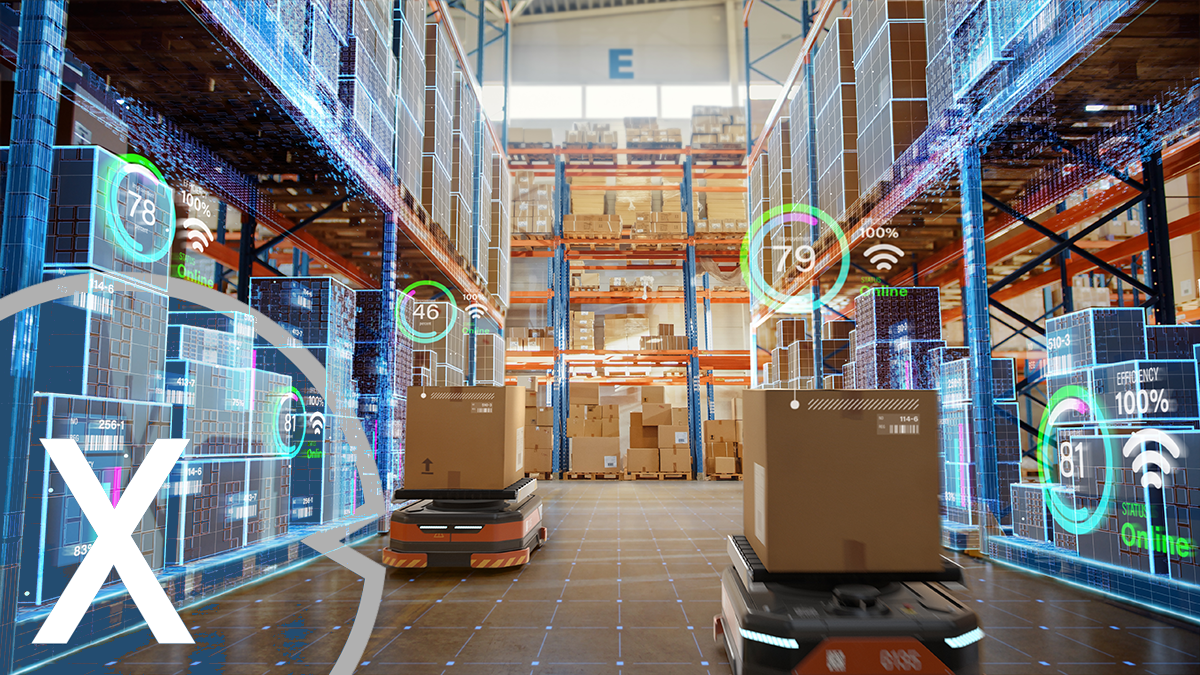
Logistics consulting and component solutions in the area of Smart Logistics, Intelligent Sensoring – 1D barcode / 2D matrix code – Autonomous sorting systems – Image: Xpert.Digital / Gorodenkoff|Shutterstock.com
Suitable for:
- Important information for logistics: Sunrise 2027, the Data Matrix code (2D barcode) or QR code will replace the barcode
- 2D matrix code (from 2027 successor to the EAN/UPC or GTIN 1D barcode) can also be used for WebAR or WebXR (3D)!
- Logistics/intralogistics with 2D matrix code: Intelligent Smart Area Scan Cameras
Logistics consultant: Use our Xpert.Plus service for your logistics consulting, warehouse planning or warehouse consulting with 2D matrix codes as well as industrial sensors and AIDC sensor technology
Xpert.Plus is a project from Xpert.Digital. We have many years of experience in supporting and advising on storage solutions and in warehouse optimization , which we bundle in a large network Xpert.Plus
I would be happy to serve as your personal advisor.
You can contact me by filling out the contact form below or simply call me on +49 89 89 674 804 (Munich) .
I'm looking forward to our joint project.
Xpert.Digital – Konrad Wolfenstein
Xpert.Digital is a hub for industry with a focus on digitalization, mechanical engineering, logistics/intralogistics and photovoltaics.
With our 360° business development solution, we support well-known companies from new business to after sales.
Market intelligence, smarketing, marketing automation, content development, PR, mail campaigns, personalized social media and lead nurturing are part of our digital tools.
You can find out more at: www.xpert.digital – www.xpert.solar – www.xpert.plus



